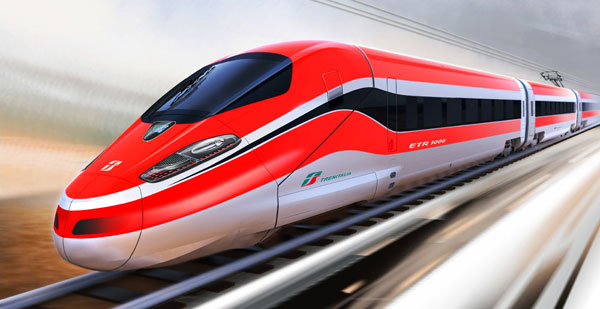Bombardier Operates on the World’s Longest Very High Speed Rail Link

China’s new 300km/h north-south rail link from Beijing to Guangzhou uses Bombardier’s ERTMS technology
Rail technology leader Bombardier Transportation’s European Rail Traffic Management System (ERTMS) technology is operating on the latest very high speed rail line to open in China. The new line completes the world’s longest very high speed rail link, connecting the capital Beijing with the industrial centre of Guangzhou.
Equipped with Bombardier INTERFLO 450 ERTMS Level 2 technology (called CTCS-3 in China), the final section of the 2,298 km long north-south, double-track link between Beijing and Zhengzhou started operation on December 26, 2012. With operating speeds of 300km/h, the line has cut rail travel times from 22 hours down to around eight hours, boosting transportation capacity and economic development along the route.
This latest high-profile line to be opened, equipped with the BOMBARDIER EBI Com 2000 radio block centre and EBI Cab 2000 ATP onboard technology, is Bombardier’s most recent contribution to China’s very high speed rail network. It comes exactly three years after the implementation of its ERTMS Level 2 technology on the first section of the new link, which was then the world’s fastest ERTMS line. The 1000 km Wuhan to Guangzhou line opened in 2009 with an initial operating speed of 350 km/h. Bombardier’s technology, is also operating on the flagship Beijing to Shanghai line since 2010, on two routes linking Shanghai with Hangzhou and Nanjing, as well as on the Hefei to Bengbu and the recently opened Harbin and Dalian lines.
Peter Cedervall, President Rail Control Solutions, Bombardier Transportation, said: “Our projects in China are an important part of our global ERTMS portfolio and project delivery experience. Trains equipped with Bombardier’s state-of-the-art very high speed rail control technology have now travelled more than 300 million km in China. That is the same distance as a return trip to the sun, with a further 15 million km added every month. We have more than 1.5 million hours, or 170 years worth of operational experience in this market alone, reflecting the maturity and reliability of our ERTMS technology.”
Jianwei Zhang, President of Bombardier China, added: “In China, Bombardier’s wayside and onboard ERTMS signalling equipment services more than 9,800 km of track and around 300 trains. This constitutes over 85% of around 11,200 km of very high speed track in operation. It is an impressive contribution to the development of the country’s rail infrastructure, enhancing people’s travelling experience and promoting economic development. Bombardier continues to be a valued partner to the Chinese Railways in ensuring the latest rail control technology is delivered in the market.”
With a strong involvement in the development of ERTMS/ETCS technology, Bombardier’s solutions are operating or being delivered on more than 2,500 vehicles and 15,000 km of track in 16 countries. As well as running on the highest speed lines in China, the INTERFLO 450 Level 2 solution has permission for commercial operation on the Amsterdam-Utrecht line in the Netherlands, one of the busiest mainlines in Europe, and was inaugurated on Sweden’s first high speed ERTMS Level 2 line, the Botnia line, in 2010.
Bombardier ERTMS technology is also installed in Croatia, Korea, Switzerland, Spain and Taiwan and first-in-market projects are being delivered in Algeria and Poland, in addition to extensive framework agreements in Sweden and Norway. Bombardier is at the heart of innovation, delivering the world’s first ERTMS Regional system, its INTERFLO 550 solution, on the Västerdal Line in Sweden.
The future success of urban centres rests on re-defining the way people move within and between these expanding social and economic hubs. Congestion and pollution pose serious challenges to the growth of industrialised and developing nations. Rail presents a low carbon alternative to air and road as the backbone of national transportation infrastructure. Around the world, Bombardier Transportation moves hundreds of thousands of people quickly and efficiently to their destinations. Modern high speed rail offers passengers an attractive alternative to motorways and medium distance air travel because of quick boarding and travelling comfort.
